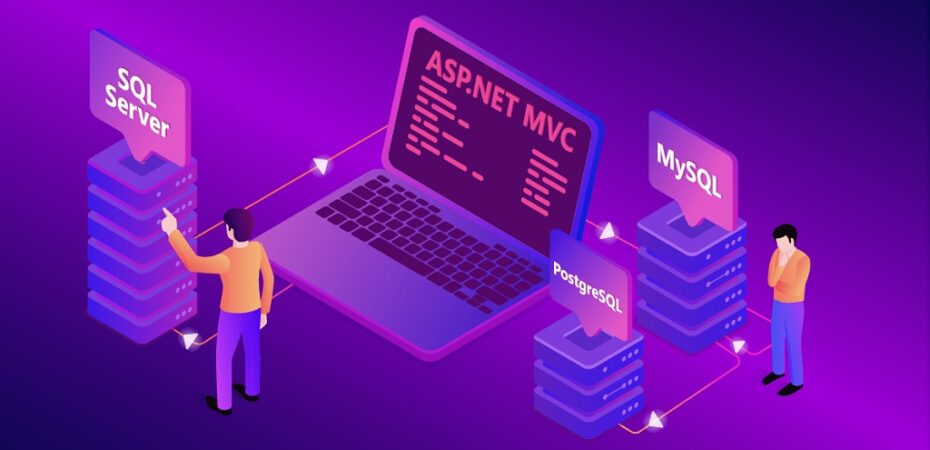During the operation of your business, the data you operate is constantly accumulating. As your database application grows in size and complexity, like an Access database, you can migrate access to sql server to better optimize performance, availability, security, scalability, reliability, resilience, and more.
If you find yourself in this situation, migrating your Access database to SQL Server is the solution you require. Luckily, Microsoft has provided an upgrade wizard in Access 2010 that simplifies the process of database conversions. This guide will take you through the steps of migrating or converting an Access database to SQL Server.
How can Access database to SQL migrating help your business?
To begin with, let’s understand the benefits for which we will perform the migration access to your sql server. There can be significant benefits for your business from migrating Access to SQL. As you already know, Access is a convenient tool for working with small or medium-sized databases, but as mentioned above, as your business grows, you may need a more powerful and scalable database management system such as SQL Server.
In addition, it’s worth noting that migrating from Access to SQL will allow you to preserve important data and move to a more powerful database environment that can handle large amounts of data and handle heavy workloads. It will also be important for you if your business continues to grow, and, accordingly, will require effective data management. So the benefits are obvious.
What to do to increase access database?

You must carry out the following actions, which are advised by a Modlogix specialist, before continuing with the conversion of the database to a SQL Server database:
- Back up the database.
- Check whether you have enough disk space on your device or not; in which you must maintain your database Upsize.
- Allow permissions for the SQL Server database.
- Add a unique index to each existing access table before converting it.
Now let’s move on to the main steps.
Installing SQL Server Express
When a project was too huge for Access, Access included a process to move access to your SQL Server before the advent of Office 2010 (including). Access Wizard did not work as a database administration system, although it was still pretty sufficient as an interface. But this assistance has been eliminated as of Access 2013. The truth is that SSMA has existed in parallel for a considerable amount of time for the same purpose without any failures. You may obtain SSMA for Access from the Microsoft website.
In addition, you must confirm that SQL Server or SQL Server Express is set up on your PC. Make sure you purchase the version of SQL Server Express with advanced services when installing it on a computer. Otherwise, you will just have SQL Management Studio and no database instance because the database engine won’t be deployed.
Following the appropriate SQL Server installation, you may carry out the procedures listed below to import the Access database into the new SQL Server database.
Migrate access to SQL Server

So let’s begin our journey. The program interface and the access process itself are quite simple, so there should be no problems.
In SQL Server Management Studio, establish a connection to the database server where you want to import the Access database. Choose New Database by doing a right-click on Databases. You may skip this step and go straight to the Import Data page below if you already have a database and simply want to import a few tables from Access. Simply right-click the current database rather than creating a new one.
Creating a new database
If you’re building a new database, give it a name and set any options that differ from the defaults.
- To import data, choose Tasks from the context menu when you right-click on the just created test database.
- Next, select the data source in the Microsoft Access (Microsoft Jet Database Engine) window’s drop-down list.
- Go to the access database you want to import by clicking Browse next to File name, then click Open. The database must be in the Access 2007 or newer sample format (ACCDB), it should be stated. The issue is unknown to SQL Server. Therefore, you need first export your Access 2007–2016 database to the MDB 2002–2003 database format by selecting File – Save as…
- Select the destination by clicking Next in the next box. The database you intended to import data into should already be chosen in the list since you right-clicked on it. If not, choose SQL Native Client from the drop-down box under Target. After you have selected the authentication method, the database instance under Server Name should appear, so at the bottom you can choose the particular database.
- After selecting Next, decide how you wish to transfer data from Access to SQL. You can choose data from one or more tables and copy it, or you can define data to transfer by writing a query. Select the first option if you wish to duplicate the Access database’s tables in their entirety or in part without altering the contents. Select the second option and create a SQL query if you simply need to copy specific rows and columns of data from the table.
All tables will be selected by default, and you can customize how the fields are displayed between the two tables if you click the Edit Display button. If you made a new database to import, it will be the exact copy of it.
For example, you have only one table in the Access database here. When you click Next button, you will come across Run package screen where Run should be checked right away.
Select the Next option, and then the Finish button is to be clicked. Now you can see the progress of the data transfer. After the data transfer is complete, the number of rows transferred for each table can be viewed in the Message column.
At the end, just Click Close and that’s it. To ensure that all the data has been imported, you can now run a SELECT on your tables. From this point on, you can take advantage of the power of SQL Server to manage your database.
Read also:
- Benefits of Using Two-factor Authentication to Protect Your Data Online
- Data Room for Startups: Prioritize Your Business Ideas
- The Virtual Data Room Technology – How to Use It and Why
- An Overview of the Data Discovery Process
- Extracting Data By Using Web Scraping: How It Works
- Web Scraping With Data Center Proxies
- How to Choose the Best Web Hosting Services?

